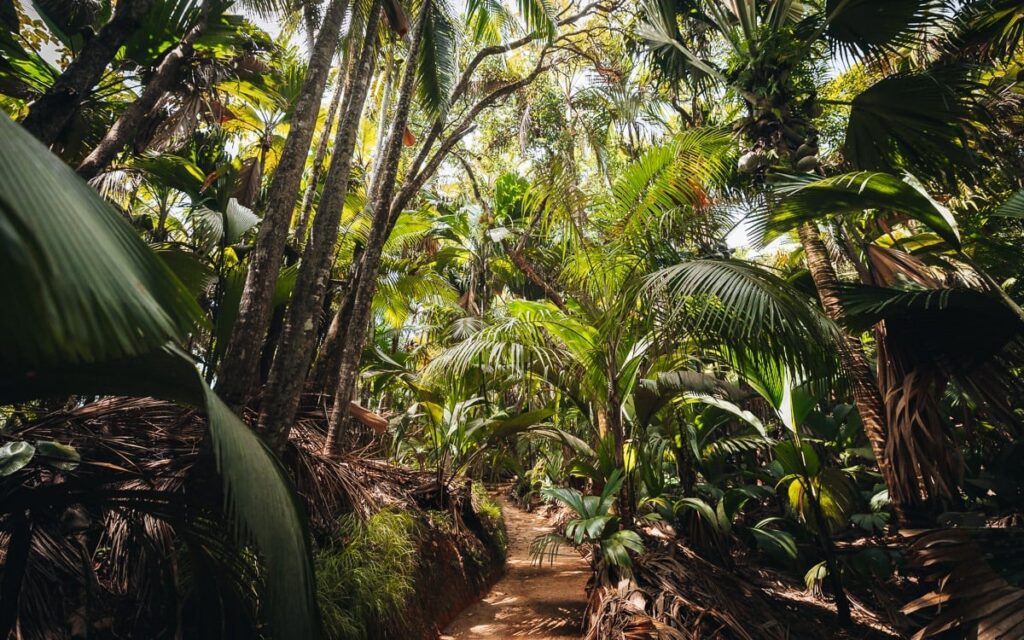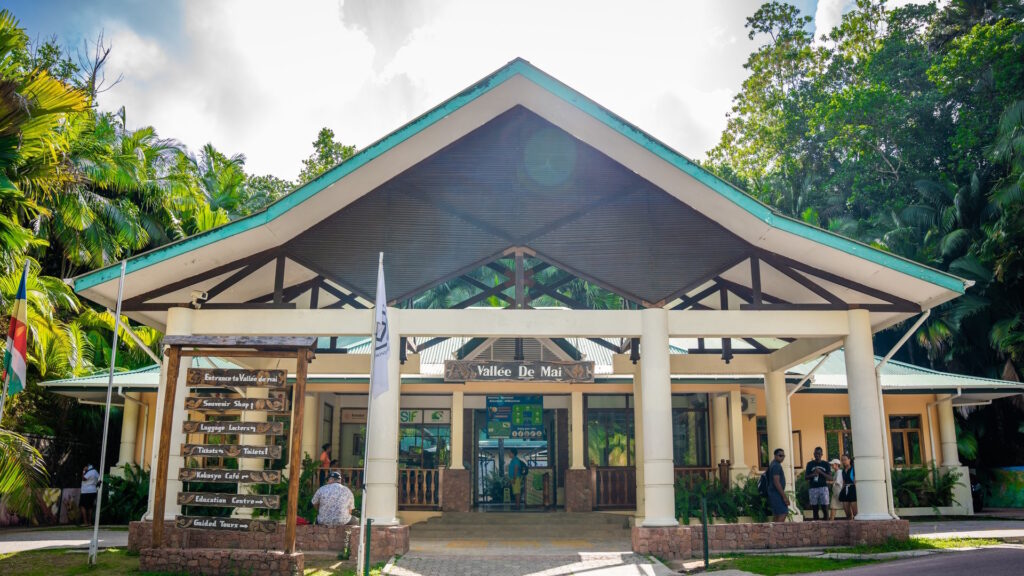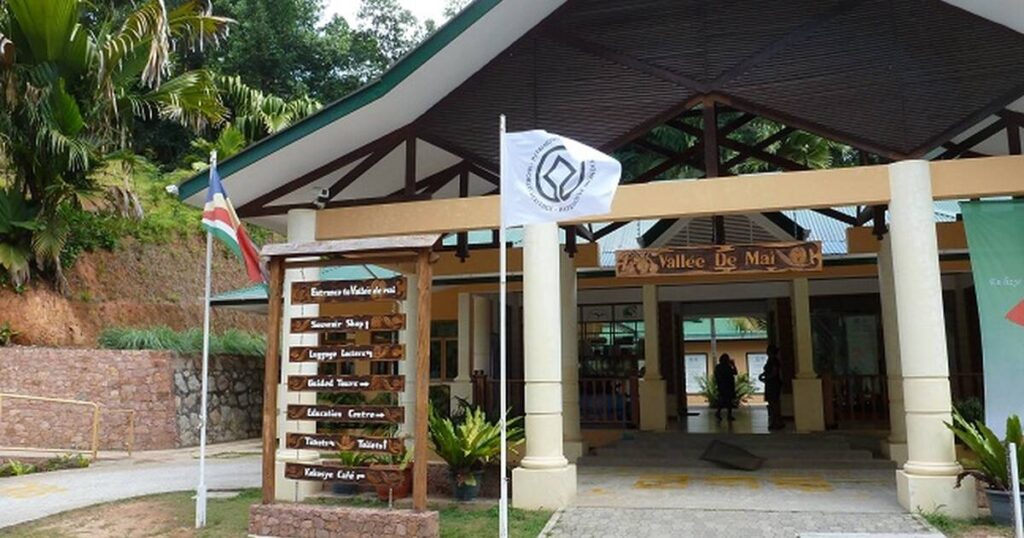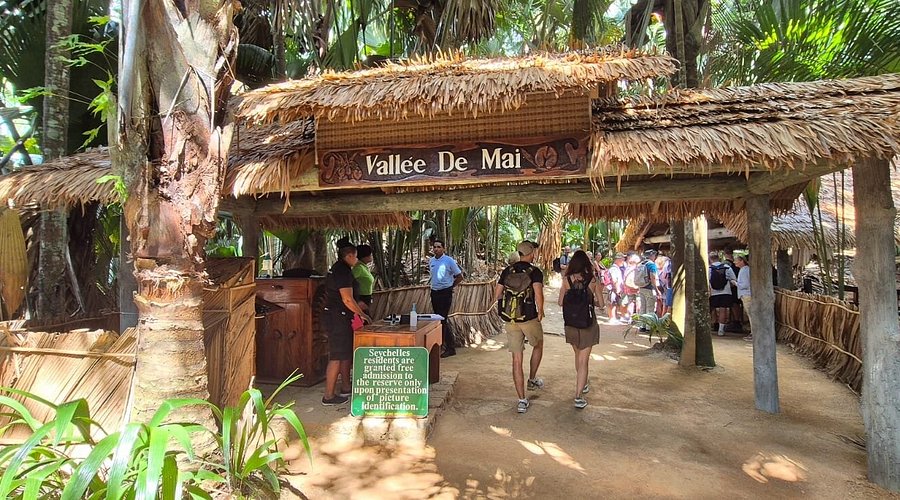At a Glance
- Vallée de Mai preserves the rare coco de mer and one of Seychelles’ oldest palm forests.
- Conservation teams manage invasive plants, protect seedlings and curb illegal coco de mer trade.
- Research guides palm restoration, pollination support and long-term protection of endangered species.
Vallée de Mai sits at the center of Praslin Island and protects one of the last surviving pieces of an ancient palm forest that once covered the Seychelles.
Added to the UNESCO World Heritage list in 1983, the 19.5-hectare reserve is best known for the coco de mer, the palm that produces the world’s heaviest seed.
Short trails lead through high canopies and dense palms, giving visitors a sense of a forest that has grown with little interference for centuries.

A forest formed long before modern visitors arrived
The reserve is the only sizeable remnant of a landscape early travelers described as untouched and almost secretive.
Scientists who first studied the forest noted the unusual structure of the palms and the rare wildlife linked to them.
Their findings strengthened Seychelles’ push for international protection, which eventually led to UNESCO’s backing and long-term conservation support.
The Coco de Mer: Rare, slow-growing and deeply protected
The coco de mer grows only on Praslin and nearby Curieuse. The palms take decades to reach maturity and produce seeds that weigh 20 to 40 kilograms.
Male and female trees stand apart, and fruit takes years to ripen, which slows natural regeneration. This makes the species both remarkable and vulnerable. Strict controls now govern harvesting and trade to curb illegal collection.

A compact forest with high biodiversity
Though small, Vallée de Mai holds several palm species found only in the Seychelles. It is also one of the last refuges of the Seychelles black parrot, a bird tied closely to the coco de mer habitat.
The forest’s plants, birds and smaller species form a tightly connected ecosystem, where shifts in one area quickly influence another.
Steady conservation work behind the scenes
The Seychelles Islands Foundation manages the reserve and handles everything from palm care to patrols that deter poaching. Staff remove invasive plants, monitor disease, support pollination and repair storm-damaged areas.
Because coco de mer palms grow slowly, nurseries help restore weakened sections. Much of the work happens quietly but keeps the forest stable.

Pressures that test the reserve’s limits
Illegal trade in coco de mer seeds remains the most serious threat. Invasive plants, shifting rainfall patterns and limited growing space complicate conservation efforts. Reports note that combined pressures could undermine the forest over time if not continually managed.
How research guides daily decisions
Recent studies track how the coco de mer reproduces and why some trees produce less fruit. Findings on nutrient levels, pollen transfer and space limitations help the foundation adjust harvesting rules, plan new plantings and support natural pollinators. Ongoing field surveys ensure the research is applied directly.
The role of local communities
The coco de mer has long-standing cultural meaning in Seychelles. Controlled sales of legally collected nuts help fund conservation, while guided walks and school programs strengthen community involvement. Increased awareness has reduced poaching and encouraged residents to report suspicious activity.

What visitors experience on the trails
The forest’s footpaths are short and easy to follow, crossing streams and clusters of palms. Signs explain the ecosystem, and guided tours offer deeper insight into the plants and birds. Visitor numbers are capped to protect the forest floor, and entrance fees fund conservation and wider environmental work across Seychelles.
Why Vallée de Mai matters
Vallée de Mai preserves a rare glimpse of a much older island world. It shelters a species found nowhere else and stands as proof that fragile habitats can survive with steady protection. In a time when many natural systems face pressure, it remains one of Seychelles’ most important reminders of what patient care can secure.





